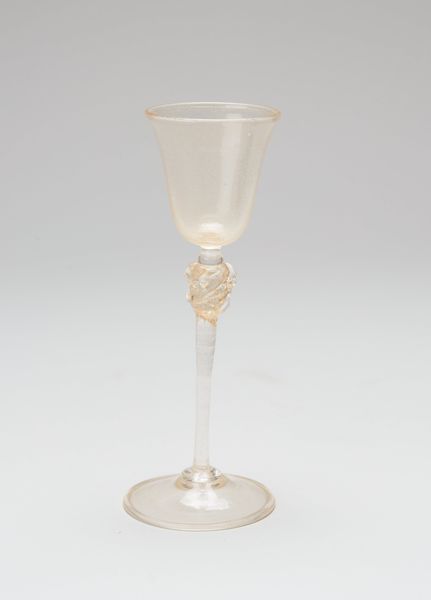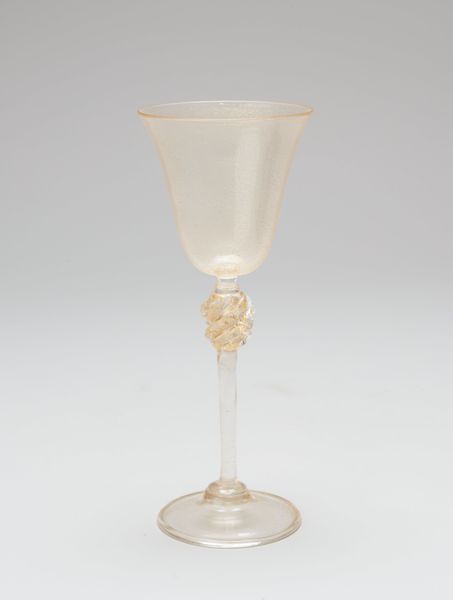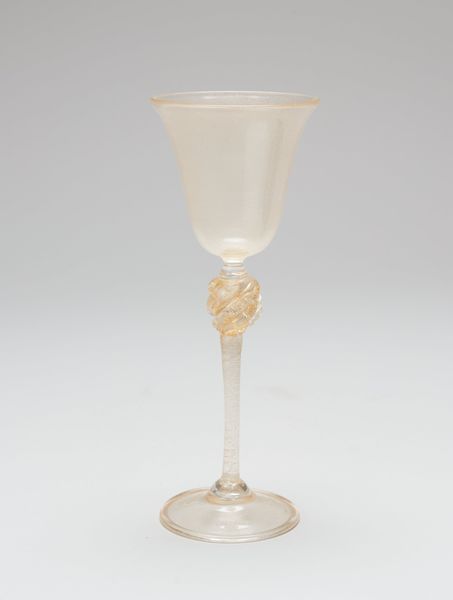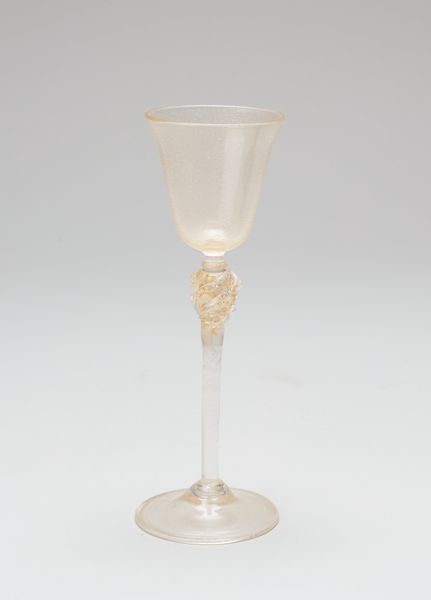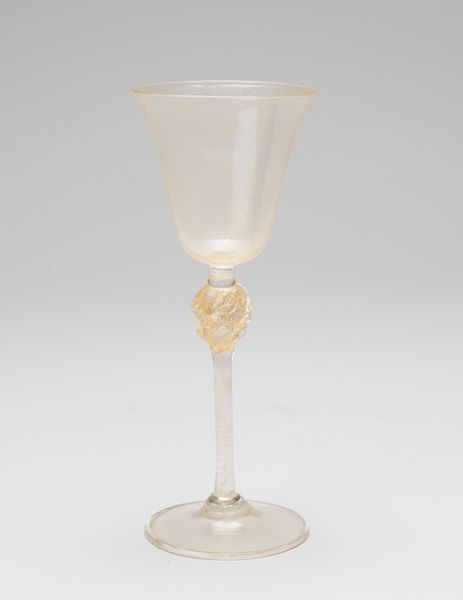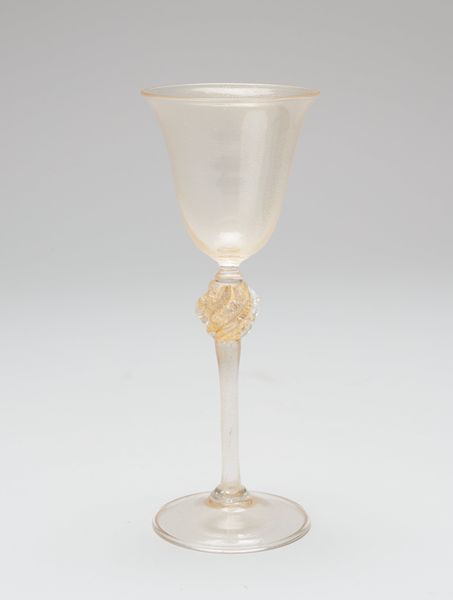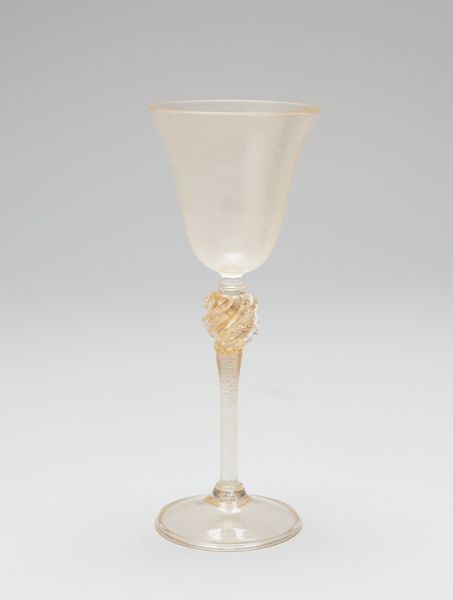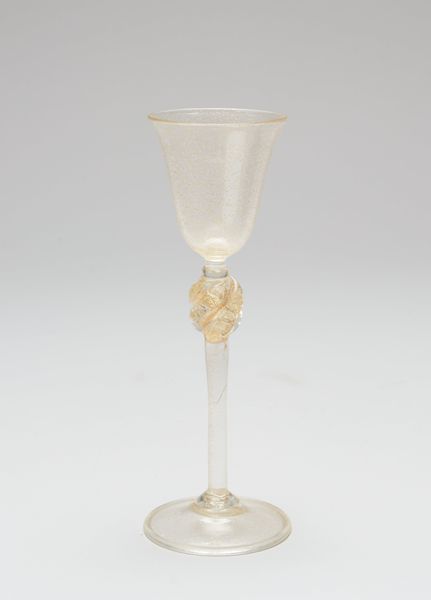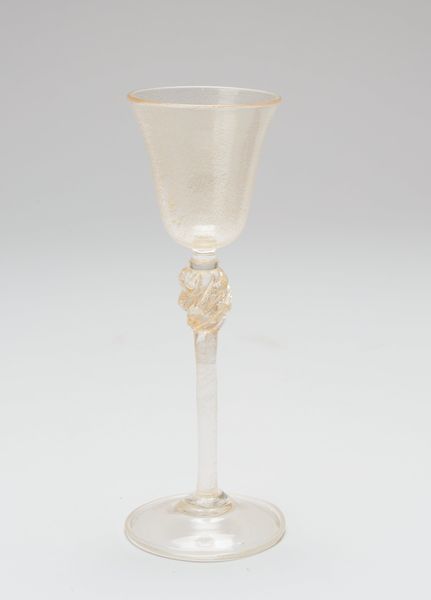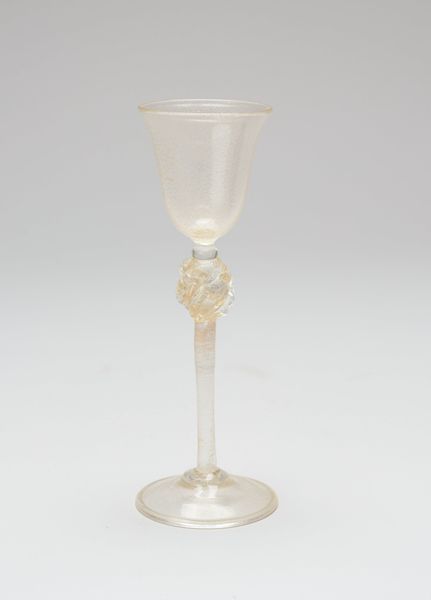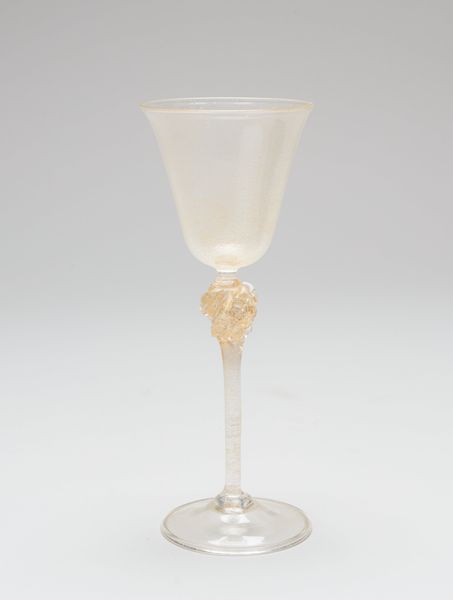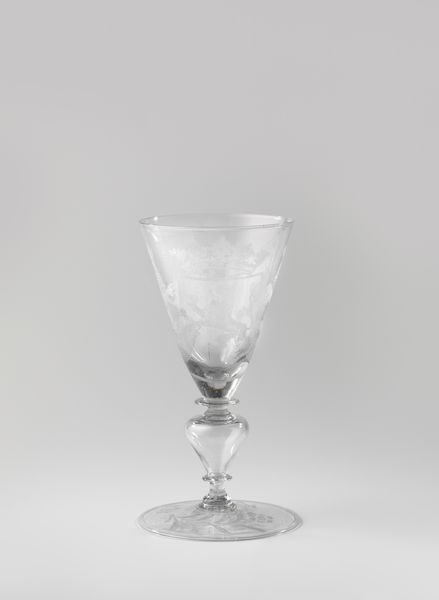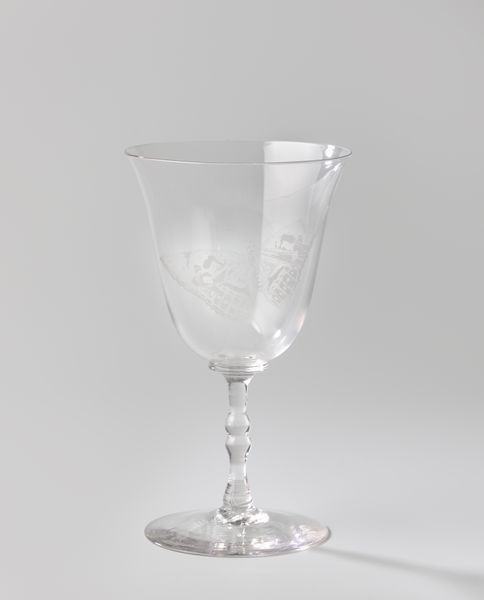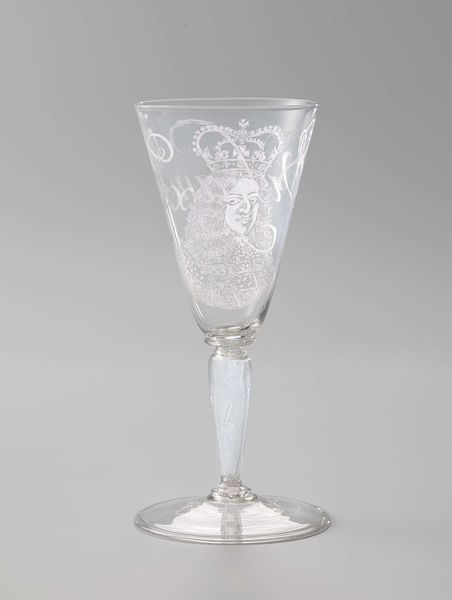
glass
#
glass
Dimensions: 8 1/4 x 3 1/4 in. (20.96 x 8.26 cm)
Copyright: Public Domain
Curator: There’s something so delicate about this glass—fragile even. The light seems to pass right through it. Editor: Indeed. We are looking at a wine glass, made around 1920, the creator of which unfortunately remains anonymous. It resides here at the Minneapolis Institute of Art. What strikes you about its composition, apart from the visual lightness? Curator: Well, I find that ornamental twist in the stem, below the cup, very interesting. I wonder, does it serve any structural function or is it purely decorative? Because twisting glass like that takes skill, and it must have been considered worth the effort. Editor: Considering the socio-cultural context, the roaring twenties, a period of mass production after the First World War, yet also, crucially, one defined by extravagant social gatherings, I would be inclined to argue this twisting technique and resulting embellishment, points to a continuation, though a slight variation, of established, refined methods of manufacture. This would appeal to specific consumers. A deviation away from mass production alone. Curator: So the glass becomes almost a status symbol? Not necessarily because of the raw materials, after all it’s still just glass, but because of the skill and time needed to craft that elaborate stem? Was there a glass-blowing culture at that time that celebrated such virtuosity? Editor: Absolutely, Venice was particularly prominent as the main center for the flourishing glass trade since the medieval period, however by the twentieth century mass industrialisation threatened craft production across Europe and further afield, thus creating new markets for handmade items that were perceived as higher quality and harder to acquire. These hand made artefacts gained a symbolic value, as cultural objects representing wealth and privilege. Curator: That's fascinating. Looking at it now, I see so much more than just a simple drinking vessel. It embodies that tension between tradition and modernity that defines the era. Editor: Precisely. An artifact holding the weight of larger cultural and economic shifts, one small vessel amidst a world undergoing enormous change.
Comments
No comments
Be the first to comment and join the conversation on the ultimate creative platform.
